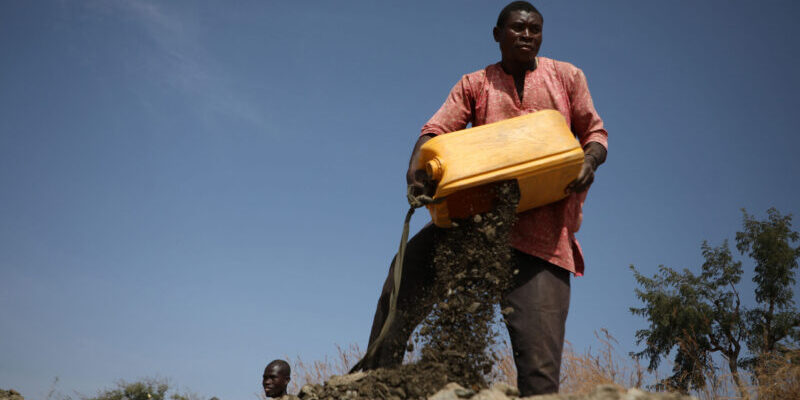Reviving Nigeria’s Neglected $700bn Mining Sector
The country wants to better capitalize on its rich mineral resources
Amid the global push for green energy solutions, Nigeria’s reserves of critical minerals such as lithium, manganese and nickel are in high demand, prompting the government to release a series of initiatives that will fast-track foreign direct investment into the sector.
On February 8, the Africa Finance Corporation (AFC), a pan-African multilateral development financial institution, established a partnership with the Nigerian mining sovereign wealth fund, Solid Minerals Development Fund (SMDF).
The partnership aims to accelerate commercial scale, private sector-led mining projects by providing much-needed funding and technical advisory.
Nigeria’s mining sector boasts 44 different types of commercially viable minerals worth an estimated $700bn, according to SMDF estimates; but limited capital injections, inadequate geo-mapping tools and widespread illegal mining have left the west African nation struggling to capitalize on its reserves.
Hajiya Shinkafi, CEO of SMDF said, “We will target all these minerals and more. Ongoing exploration efforts in Nigeria have identified excellent lithium prospects that we will look to support.”
Ongoing exploration efforts in Nigeria have identified excellent lithium prospects that we will look to support.
One of the key issues stalling the sector’s growth is the lack of sophisticated geo-scientific data gathering tools. For decades, corporations have largely relied on illegal mining activities to gather information on the types, quantities and locations of minerals available.
“Historically, it’s actually been one of the main pathfinders for a lot of junior mining companies to make these discoveries,” says Segun Lawson, CEO at Thor Explorations — a Canada-listed mining firm that heads AFC’s flagship gold mine project in Nigeria.
“These illegal miners are mining at a much smaller scale with rudimentary methods, and then larger corporations are following off the backs of these small discoveries,” he adds.
Illegal mining caused an outbreak of lead poisoning in 2010 that affected 18,000 people and killed at least 200 children, according to a report by the UN. Unfazed by its risks, artisanal miners continue to dominate mining activities in Nigeria’s north-western regions. “However, if you look across west Africa there are a lot of artisanal and illegal mining, it’s not just unique to Nigeria,” Mr Lawson says.
Reports of banditry and insurgencies across several mining areas, including Nigeria’s states of Zamfara and Kaduna, have also discouraged foreign investors. In November 2022, a local terror group threatened to attack a gold mine in the Bukuyum local government area of Zamfara after miners refused to pay a 10% levy.
During a local interview conducted last month, Nigeria’s minister of mines and steel development admitted that “we do not have the resources to pre-empt all these illegal activities because Nigeria is vast”.
Instead, the government has turned its focus on data gathering projects to add legitimacy to the sector. Osam Iyahen, senior director and head of natural resources at AFC, tells fDi that “the Nigerian government has taken steps to enable a more accurate delineation of the types and quantities of minerals available by tapping into a funding programme with the World Bank to advance airborne geo-mapping exercises”.
The Nigerian government is also supporting a large number of infrastructure initiatives to build transportation links for the movement of equipment to mining sites and the evacuation of minerals for sale and export.
Prior to AFC’s partnership with SMDF, the development institution collaborated with Thor Explorations to finance the Segilola Gold Mine. The mine is currently Nigeria’s most advanced gold project after achieving commercial production in 2021.
The company’s CEO hopes that its success will catalyse foreign investments into the country, but acknowledges the challenges that mining projects face.
“Statistically speaking, the number of conversions from an exploration license to a discovery is very low. Then from an exploration to an operation license, that number is even lower,” says Mr Lawson.
However, he adds: “Consistent exploration and more success stories will only lead to further growth in the sector.”
57 total views , 1 views today





